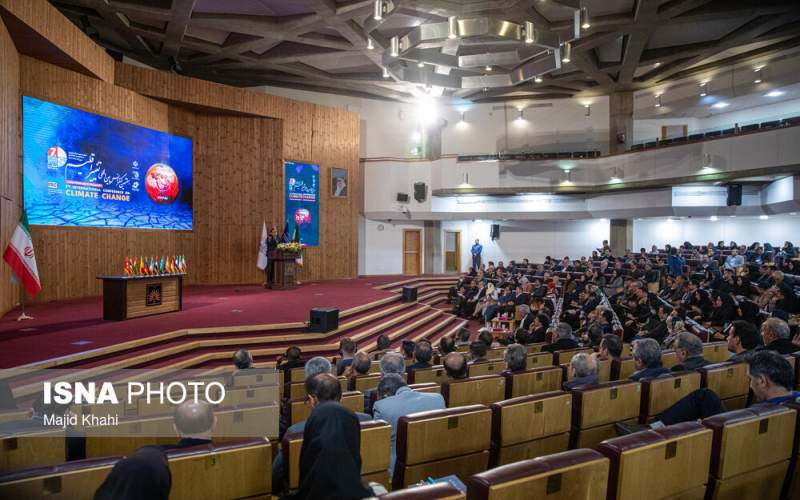The Iran Project
: Moving toward creating and developing resilient cities is the best way possible to deal with climate change, Sahar Tajbakhah, the head of the Iran Metrological Organization, has said.
Tuesday 30 January 2024 - 19:37
Story Code : 413838
Source : Tehran Times
Resilient cities can deal with climate change, official says
She made the remarks at the Seventh International Conference on Climate Change in Tehran on Tuesday.
Referring to the reports about weather in West Asia, Tajbakhsh noted that the highest temperature rise has been recorded in Iran and Iraq and the highest rainfall decline has been recorded in Afghanistan and Azerbaijan.
The issue of climate change has caused an increase in temperature on a global scale. The report related to Asia in 2022 indicates that the increase in the occurrence of extreme phenomena has caused serious damage such as the occurrence of severe floods, she explained.
Urban resilience is the ability or capacity of a city to survive and thrive in the face of disaster, any kind of disaster. It turns out that the capacities that cities or states, or nations need to survive and thrive in the face of all these different threats are pretty broad.
On January 28, Tajbakhsh said that the phenomenon of climate change on the planet has caused extreme weather conditions to the extent that new heatwave records and severe weather changes in the country were observed.
As international organizations have announced, the unprecedented rise in global temperatures has led summer 2023 to become the hottest summer ever, she added.
This means that the Earth's atmosphere has grown warmer and the balance between the atmosphere and the ocean is lost.
The conference will focus on ‘climate change and its consequences’.
On the sidelines of the 7th international conference, roundtables and technical meetings will be held on topics including "Climate change and social resilience"; "Land subsidence monitoring using remote radar sensing"; "Policies, laws and perspectives relating to climate change at the national and international levels"; "Carbon footprint in medical and healthcare centers"; and "Spatial artificial intelligence, an approach to assess the effects of climate change on human health", IRNA quoted Behzad Layeqi, an official with Metrological Organization, as saying.
“Climate forecasting patterns; Climate anomalies; Greenhouse gases; Modern technologies in climate change studies; Global warming effects; Climate change and agriculture; Climate change and water resources; Climate change and environment (soil, wildlife, air quality, lakes, rivers, and wetlands); Climate change and energy; Climate change and health; Climate change and its social and economic impacts; and Climate change and transportation" will be other axes of the conference.
National plan on climate change
In August 2013, Tajbakhsh said a national plan including resource management is needed to deal with the consequences of climate change.
“Today, climate change is known as a security issue in the world and everyone is aware of the effects and hazards posed by that,” she added, IRNA reported.
The official emphasized the need for launching action plans by all countries across the world to reduce greenhouse gases.
“Countries with poor infrastructure are more vulnerable to consequences of rising temperature such as power outages and droughts.”
Tajbakhsh went on to say that it requires global understanding and management to moderate the effects of climate change.
“A practical plan to reduce greenhouse gases should be drawn up for all countries within a geographical region,” she said, adding that Iran also needs a national plan to manage the issue in various areas.
Elsewhere in her remarks, Tajbakhsh said management of water resources should be based on climate change and the use of renewable sources of energy should be on the agenda.
“Unstable infrastructure and land use change are the main causes of numerous floods following torrential rains.”
“Unstable infrastructure and land use change are the main causes of numerous floods following torrential rains.”
She referred to dust storms as one of the consequences of drought, saying: “Climate change may increase wind speed in some areas, intensifying dust storms.”
“For this reason, the World Meteorological Organization emphasizes the need to set up impact-based systems in which weather forecasts can tell in detail what the consequences of an atmospheric phenomenon are in each region.”
“Data-driven information should be collected and integrated. It requires an increase in the number of radars and up-to-date meteorological equipment to monitor information,” Tajbakhsh concluded.
Impacts of climate change
In recent years, the issue of climate change has even become one of the major political issues of the world so the United Nations and many other governments have gotten involved in this issue.
Thanks to the climate change, the air temperature has increased. Warmer temperature increases the rate of evaporation, a good example of which is the Caspian Sea's reduced volume of water.
On the other hand, there has been a noticeable decrease in the amount of snowfall in the country and a change in the pattern of precipitation from snow to rain can be seen. But the total amount of rainfall has decreased as well.
Climate change has already inserted many harmful effects on our country, and if we do not take steps to adapt ourselves to the consequences of this phenomenon and observe environmental principles, in the future, more dangerous consequences will surely plague Iran and make the conditions more unfavorable for human, animal, and plant species.
Reporter : Editorial of The Iran Project
# Tags











